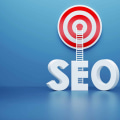Programmatic media buying is a type of advertising that uses real-time bidding (RTB) to purchase digital ad impressions. It's a complex process, and there are six main types of programmatic agreements. To help decode the complexity, here's a brief reference sheet with each of the six main types of programmatic advertising offers. Real-time bidding (RTB) is an open auction for advertisers and publishers in which the price of inventory is agreed in real time.
This type of programmatic offer allows transparency between buyers and sellers: publishers can view the inventory before the ad is published, thus controlling the quality of the content, while advertisers can take charge of the inventory prices. Preferential bids occur when publishers sell their premium inventory in an individual programmatic auction at a fixed price of CPM (cost per million) to a select group of advertisers. This type of programmatic ads has a number of advantages, such as wide reach, resistance to ad blockers, and discrete locations. Private marketplaces (PMP) are auctions in which only specific advertisers can bid, who are identified through a selection process established by the publisher.
With a private marketplace, you'll always know where your ads appear. Eliminate the mystery of ad placement that comes with the real-time bidding option. Programmatic direct is when a publisher sends an invitation to an advertiser to buy their inventory directly without a bidding process. This means that multimedia inventory is sold to advertisers at a negotiated price, usually based on the CPM, for a specified period of time.
Because of the nature of the exclusivity and specificity of direct programmatic media buying, it's particularly useful for companies that focus on premium locations and brand safety. Mobile network operator O2 reused its television commercials and created audience segments that would be better suited to different groups of people. More than 1000 versions of the programmatic advertisement were created, allowing each user to display a personalized advertisement. Audi adopted a data-driven approach that combined all customer data to optimize its most valuable consumer touchpoints. Mobile players will increase considerably, from 1.8 billion to more than 2.3 billion in 2026, making them a very lucrative audience to target through programmatic advertisements. Now that you know the different types of programmatic marketing, let's move on to programmatic ad formats.
Programmatic advertising allows many types of media purchases (graphic, native, video ads, etc.).






